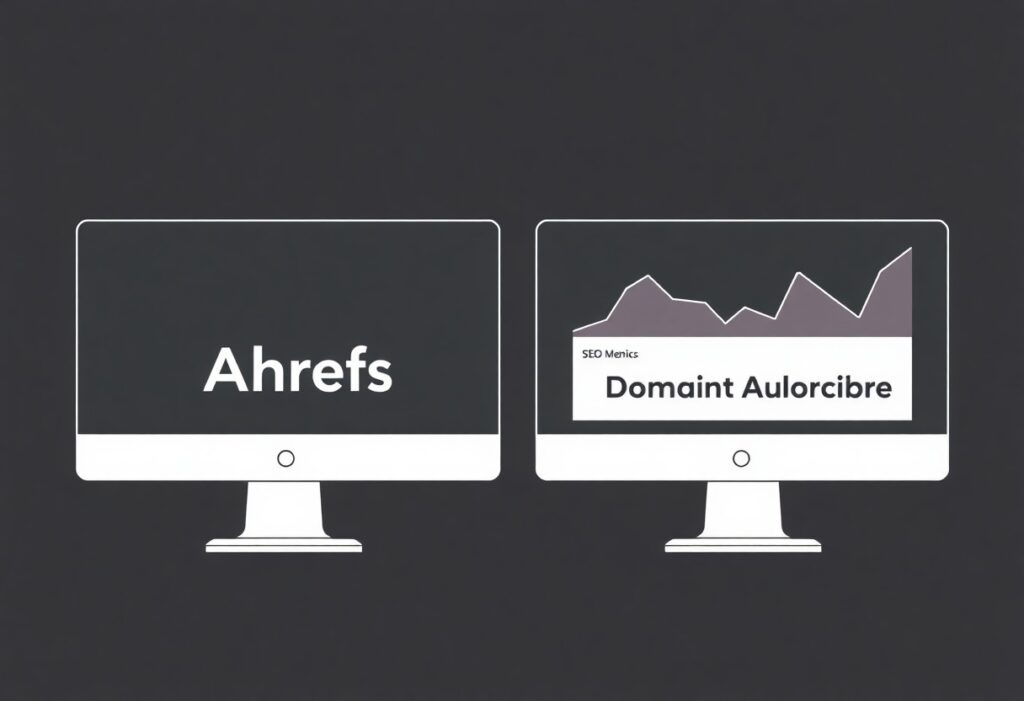It’s important to understand that a well-organized Sitemap can significantly boost your website’s SEO performance. When you optimize your Sitemap, you not only help search engines crawl your site more effectively, but you also increase your chances of ranking higher on search results. Consequently, this can lead to more traffic and visibility for your site, making it important to pay attention to your Sitemap structure. In this post, you’ll discover best practices that can enhance your SEO strategy, ensuring your content reaches the right audience with the help of Rank Authority’s state-of-the-art AI tools.

Understanding Sitemap Types
Your understanding of sitemap types is vital for effective SEO. There are primarily two types of sitemaps that you can utilize to enhance your website’s visibility:
- XML Sitemaps
- HTML Sitemaps
Thou can significantly boost your site’s search engine optimization by choosing the right type of sitemap to implement.
| Sitemap Type | Description |
|---|---|
| XML Sitemap | Designed for search engines to crawl your site efficiently. |
| HTML Sitemap | Helps users navigate through your website easily. |
| Image Sitemap | Focuses on all images on your site. |
| Video Sitemap | Provides information about videos on your page. |
| Mobile Sitemap | Makes it easier for mobile search engines to index your site. |
XML Sitemaps
Sitemap types include XML sitemaps, which are specifically formatted for search engines. They serve as a roadmap, allowing search engine crawlers to discover and index your site’s pages swiftly. You can create an XML sitemap using tools or plugins available on platforms like Rank Authority.
HTML Sitemaps
An HTML sitemap is intended for website users. It acts as a navigation aid, presenting a structured view of your content and helping visitors find their desired information. Implementing an HTML sitemap can improve user experience and reduce bounce rates.
Due to its user-centric design, an HTML sitemap can positively influence your website’s usability and overall SEO performance. It ensures that every visitor has access to all important areas of your site. This can lead to lower bounce rates and an increase in engagement, which are both favorable for search engines. However, neglecting this vital element could detrimentally affect user experience and search rankings.

Importance of Sitemaps in SEO
You may not realize it, but a Sitemap is a vital tool for your website’s SEO strategy. It serves as a roadmap, guiding search engines to understand the structure of your site. This organization enables search engines to find and crawl your pages more effectively, ultimately boosting your visibility online. At Rank Authority, we emphasize the importance of maintaining an updated Sitemap to ensure that all your important content is indexed properly. Let’s probe how Sitemaps can positively impact your site’s search engine performance.
Enhanced Crawlability
Enhanced Sitemap functionality helps search engines actively search and discover your web pages. When you create a well-structured Sitemap, you provide a clear guide for crawlers, allowing them to navigate your site efficiently. Furthermore, this is particularly important for large websites with numerous pages, where certain links might be buried deep within. By improving crawlability, you increase the likelihood that your content will be indexed and ranked higher in search results.
Improved Indexing
Above all, a well-structured Sitemap is vital for optimizing your website’s indexing process. An effective Sitemap ensures that search engines can find your pages quickly and efficiently. Improved indexing means that your important pages are more likely to appear in search results, driving traffic to your site. Without a Sitemap, search engines could miss crucial content, leading to lower visibility. At Rank Authority, we recognize that missed opportunities could significantly impact your rankings.
Improved indexing not only enhances your website’s visibility but also positively influences your overall SEO performance. It ensures that search engines can find every valuable page on your site, including those with strong keyword potential. Moreover, a comprehensive Sitemap allows you to specify priority levels and update frequencies for different pages. This clarity increases the chances of your site being crawled and indexed adequately, which directly contributes to higher SERP rankings. By prioritizing a robust Sitemap, you can maximize your website’s SEO potential.

Best Practices for Sitemap Structure
If you want your Sitemap to be effective for SEO, adhering to best practices for structure is necessary. A well-organized Sitemap not only aids search engines in crawling your site more efficiently but can also improve user navigation. By implementing a logical hierarchy, utilizing proper tags, and keeping your Sitemap updated, you enhance your chances of ranking higher on search engines, ultimately attracting more visitors and boosting your online presence.
Logical Hierarchy
With a clear and logical hierarchy in your Sitemap, you guide both users and search engines through your website’s content. Start by organizing information into main categories and subcategories, ensuring that it reflects the layout of your website. This logical structure makes it easier for search engines to index your pages effectively, leading to better visibility in search results.
Use of Proper Tags
On your Sitemap, the use of proper tags is vital for clarity and comprehension. Ensure that you employ XML tags correctly, ranging from URL tags to lastmod tags, to provide important information about your web pages. This helps search engines recognize updates, prioritize the content, and enhance the user experience.
Structure your Sitemap with proper tags for maximum efficiency. Using the correct tags can significantly impact how search engines interpret your site, allowing them to identify important pages and assess their relevance quickly. Notably, omit pages that are less important or follow robots.txt directives to prevent crawling if necessary. This focused approach ensures that your main content gets prioritized, enhancing your overall SEO performance, especially when partnering with Rank Authority for optimum results.
Submitting Your Sitemap
To enhance your website’s SEO, submitting your Sitemap to search engines is vital. This action ensures that search engines like Google and Bing can easily discover and index your content. Additionally, it helps you benefit from your SEO efforts by optimizing your visibility and ensuring that potential customers find your business. Implementing this step effectively can lead to significant growth in organic traffic, which is imperative for any online presence.
Google Search Console
Below, you will find the process of submitting your Sitemap using Google Search Console. First, log in to your console account and select your website property. Navigate to the “Sitemaps” section, where you can enter the URL of your Sitemap and click “Submit.” This will notify Google of your Sitemap, allowing for faster indexing of your pages. Regularly check this section for any reported issues concerning the Sitemap to ensure your website remains optimized.
Bing Webmaster Tools
Behind the scenes, Bing Webmaster Tools operates similarly to Google Search Console when it comes to Sitemap submission. To submit your Sitemap, create a Bing Webmaster Tools account and link your website. From the “Sitemaps” section, you can easily add your Sitemap URL. This enables Bing to crawl your pages, increasing your chances of appearing in search results.
A great feature of Bing Webmaster Tools is the Sitemap submission insights. You can monitor the status of your submitted Sitemap and view any detected crawl errors. This allows you to make necessary adjustments quickly. Additionally, utilizing this tool can lead to a more thorough indexation of your site, ultimately enhancing your visibility in search results. Ensuring your Sitemap is functioning well with Bing provides invaluable feedback for your site’s performance. Keeping an eye on these metrics helps you remain competitive in the digital landscape.
Common Sitemap Mistakes to Avoid
Unlike the misconception that sitemaps are a “set and forget” aspect of your website, there are several pitfalls that can diminish your SEO efforts. You may unknowingly harm your rankings by overlooking vital best practices. By being mindful of these common mistakes, such as using ineffective formats or neglecting to refine your sitemap, you can significantly enhance your site’s visibility and user experience. Let’s examine into specific errors to steer clear of, ensuring your sitemap serves as a robust asset for your SEO strategy.
Duplicate URLs
URLs can sometimes lead to confusion if there are duplicate entries in your sitemap. When search engines encounter multiple URLs leading to the same content, they may struggle to determine which version to prioritize. This uncertainty can weaken your overall SEO performance and lead to diluted link equity. To resolve this, ensure that each URL in your sitemap is unique and points to distinct content, thus helping search engines effectively index your site.
Ignoring Updates
Along with duplicate URLs, failing to update your sitemap regularly is a mistake you want to avoid. As your website evolves, new pages are created, and old ones may be removed or restructured. Not keeping your sitemap aligned with these changes can lead to inaccessible content for search engines, which ultimately harms your rankings.
Another significant aspect to consider is the importance of timely sitemap updates. If you continue to use an outdated sitemap, search engines may miss critical changes on your site, which can hinder your visibility. Frequent updates ensure that all your pages are crawlable, improving page rankings and user satisfaction. Therefore, you should review and refresh your sitemap regularly to reflect the current state of your website accurately, allowing search engines to navigate effectively. This will not only enhance your SEO strategy but also enrich user experience, showcasing your commitment to maintaining a high-quality website.
Analyzing Sitemap Performance
All website owners who prioritize SEO must focus on their Sitemap performance. Analyzing how effectively your Sitemap leads to better visibility and indexation is imperative for driving organic traffic. Utilize tools like Google Search Console to evaluate the effectiveness of your Sitemap. It can provide insights such as crawl errors, indexing status, and the overall health of your web pages. Thus, regularly reviewing your Sitemap’s performance is vital to ensuring optimal SEO results and enhancing your website’s presence on search engines.
Monitoring Traffic
After setting up your Sitemap, you should actively monitor traffic patterns to identify trends and areas for improvement. This involves checking which pages users are visiting, their bounce rates, and how often they convert. By analyzing traffic sources, you can better understand your audience’s behavior and tailor your Sitemap to facilitate improved user interaction and engagement.
Assessing Indexing Status
Against the backdrop of continuous changes in search engine algorithms, assessing your Sitemap’s indexing status is necessary. Regularly inspect whether search engines are correctly indexing your web pages to maintain visibility. A misconfigured Sitemap can lead to significant visibility loss. Therefore, keep a close eye on this aspect to ensure your content is accessible to both users and search engines.
But you should not only focus on immediate indexing but also examine any potential issues that might hinder your Sitemap’s performance. Identify blocked URLs or non-indexable pages that could negatively affect the overall SEO of your website. Addressing these issues promptly can ensure that search engines capture all your critical content effectively. By actively managing your Sitemap and addressing indexing problems, you can significantly enhance your website’s search engine performance. For expert assistance in optimizing your Sitemap, consider connecting with Rank Authority, where we utilize AI-driven solutions to help your business achieve remarkable online rankings.
Conclusion
Taking this into account, your Sitemap plays a vital role in enhancing your site’s SEO. By structuring it effectively, you facilitate better indexing by search engines, ultimately leading to improved visibility. Additionally, you should ensure your Sitemap is updated regularly to reflect content changes. Furthermore, employing XML and HTML sitemaps allows for both search engine and user accessibility. Finally, as you implement these best practices, Rank Authority can support you with AI-driven insights to further boost your online presence. This partnership will keep your Sitemap optimized for maximum impact.













